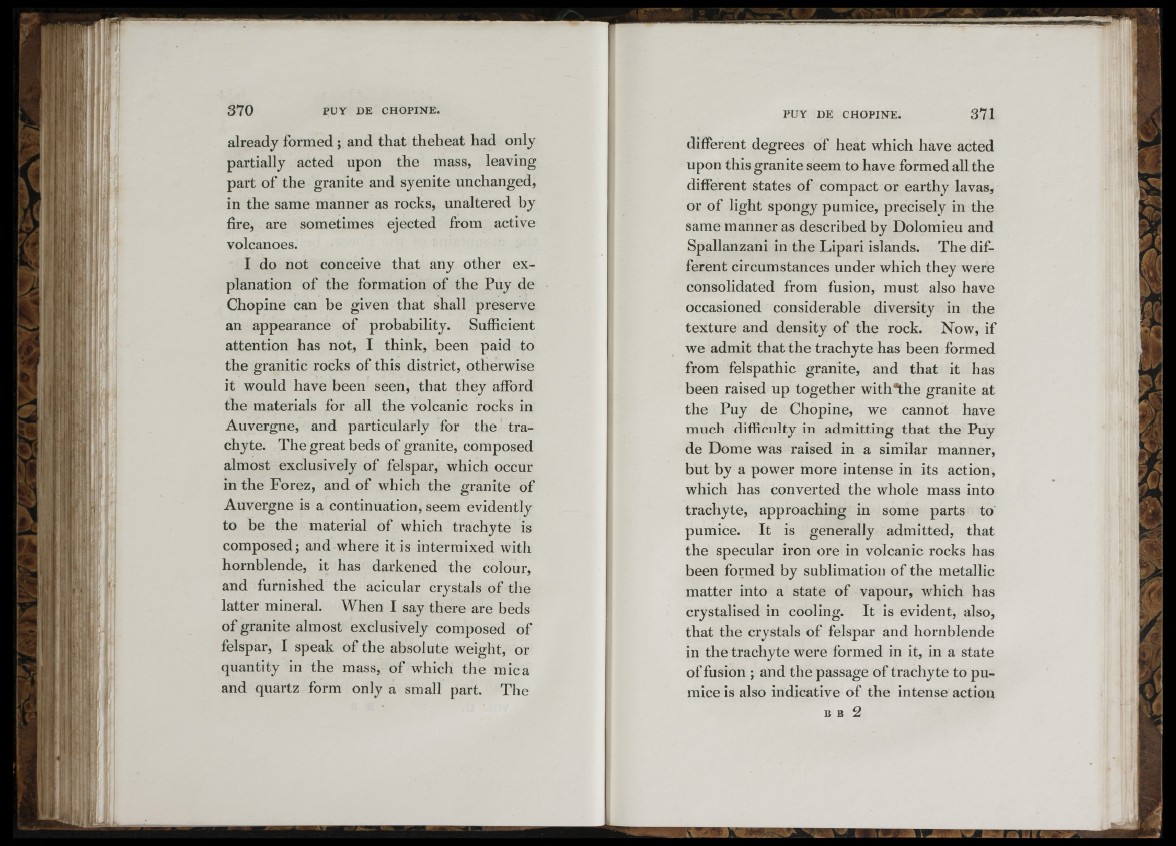
H: -
iilll
il.:
i
'f i l : ¡ iilll! |:l,! 1 • .: I 'fiW.i ,
f ill H . " iJ - i i ia i ,
370 P U Y D E C H O P IN E .
already formed ; and that theheat had only
partially acted upon the mass, leaving
part of the granite and syenite unchanged,
in the same manner as rocks, unaltered by
fire, are sometimes ejected from active
volcanoes.
I do not conceive that any other explanation
of the formation of the Puy de
Chopine can be given that shall preserve
an appearance of probability. Sufficient
attention has not, I think, been paid to
the granitic rocks of this district, otherwise
it would have been seen, that they afford
the materials for all the volcanic rocks in
Auvergne, and particularly for the trachyte.
The great beds of granite, composed
almost exclusively of felspar, which occur
in the Forez, and of which the granite of
Auvergne is a continuation, seem evidently
to be the material of which trachyte is
composed; and where it is intermixed with
hornblende, it has darkened the colour,
and furnished the acicular crystals of the
latter mineral. When I say there are beds
of granite almost exclusively composed of
felspar, I speak of the absolute weight, or
quantity in the mass, of which th e mica
and quartz form only a small part. The
P U Y D E C H O P IN E . 371
different degrees of heat which have acted
upon this granite seem to have formed all the
different states of compact or earthy lavas,
or of light spongy pumice, precisely in the
same manner as described by Dolomieu and
Spallanzani in the Lipari islands. The different
circumstances under which they were
consolidated from fusion, must also have
occasioned considerable diversity in the
texture and density of the rock. Now, if
we admit that the trachyte has been formed
from felspathic granite, and that it has
been raised up together withiihe granite at
the Puy de Chopine, we cannot have
much difficulty in admitting that the Puy
de Dome was raised in a similar manner,
but by a power more intense in its action,
which has converted the whole mass into
trachyte, approaching in some parts to
pumice. It is generally admitted, that
the specular iron ore in volcanic rocks has
been formed by sublimation of the metallic
matter into a state of vapour, which has
crystalised in cooling. It is evident, also,
that the crystals of felspar and hornblende
in the trachyte were formed in it, in a state
of fusion ; and the passage of trachyte to pumice
is also indicative of the intense action
B B 2